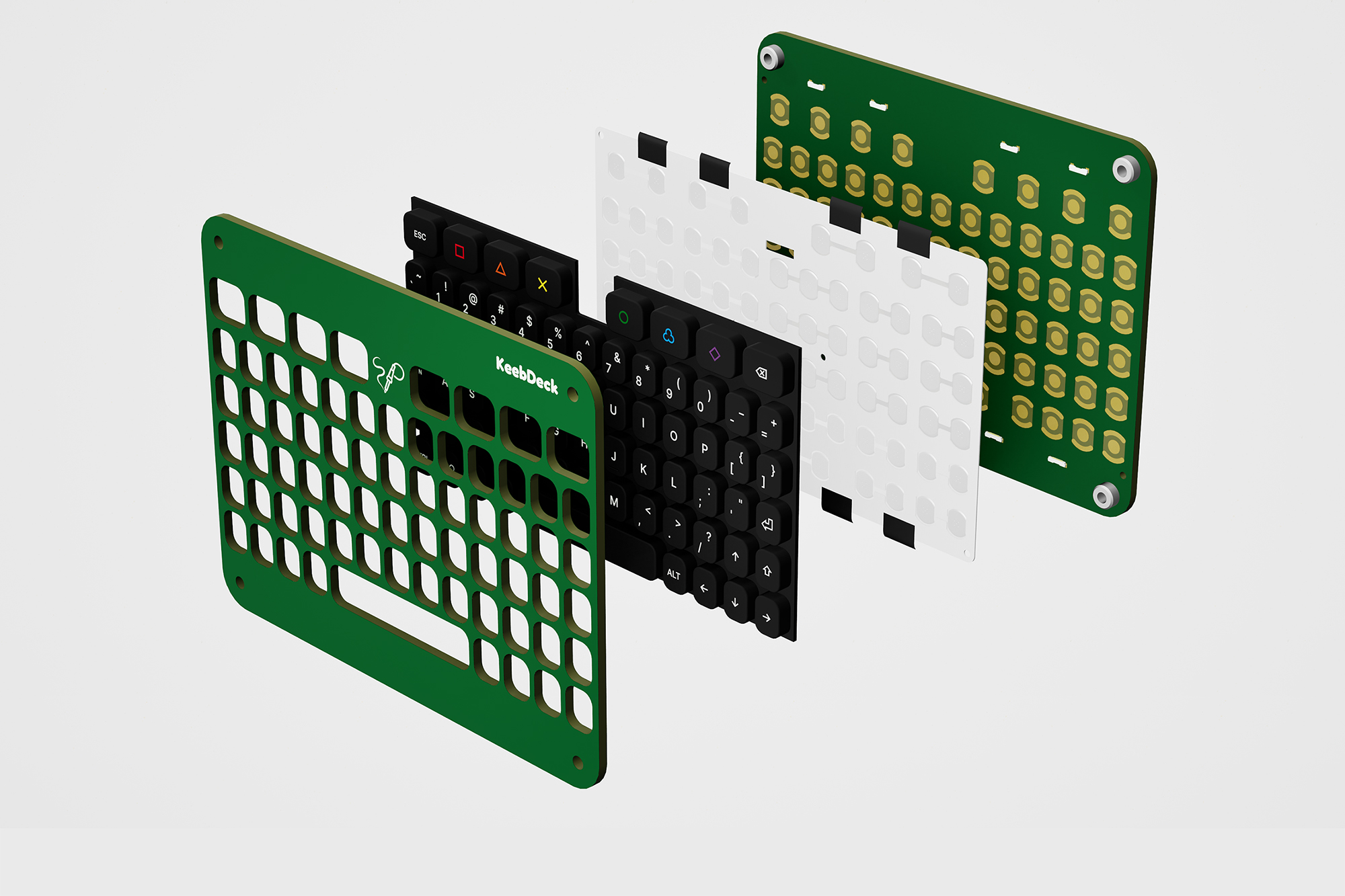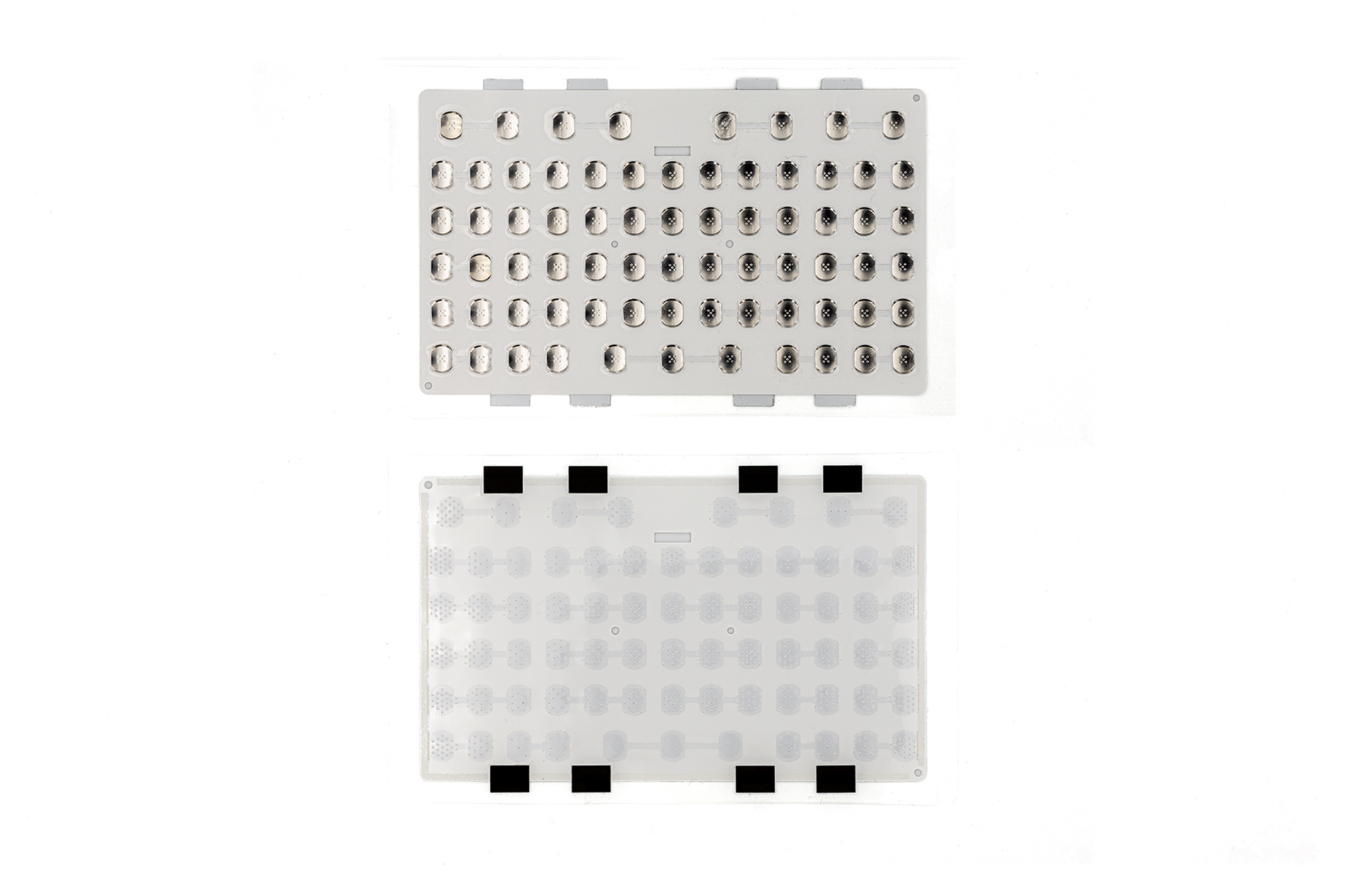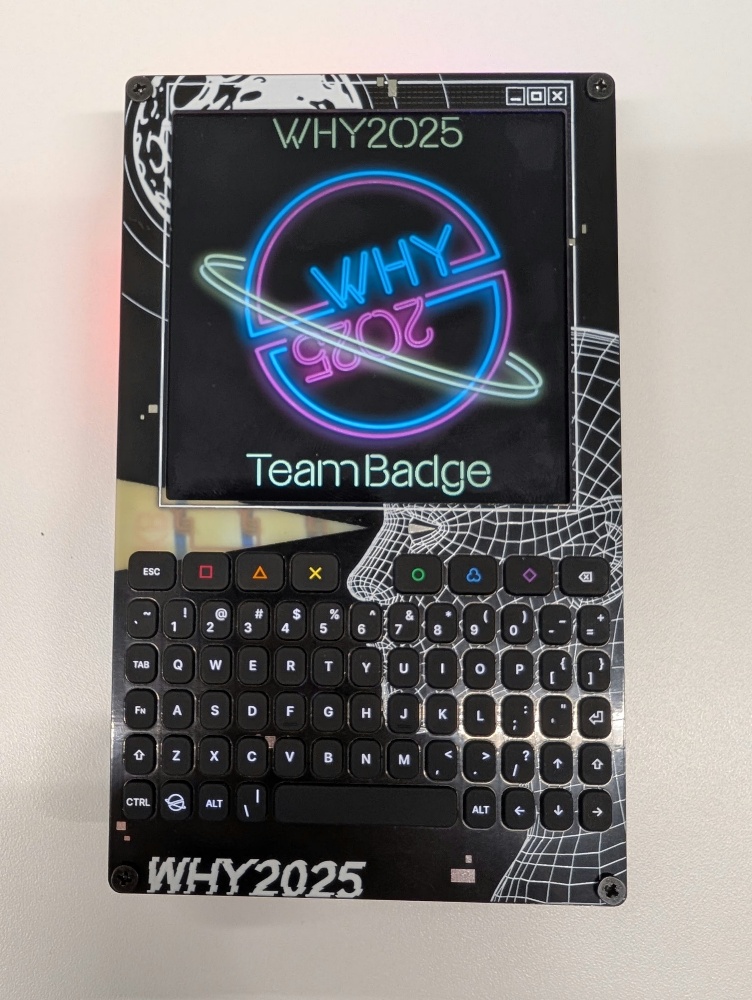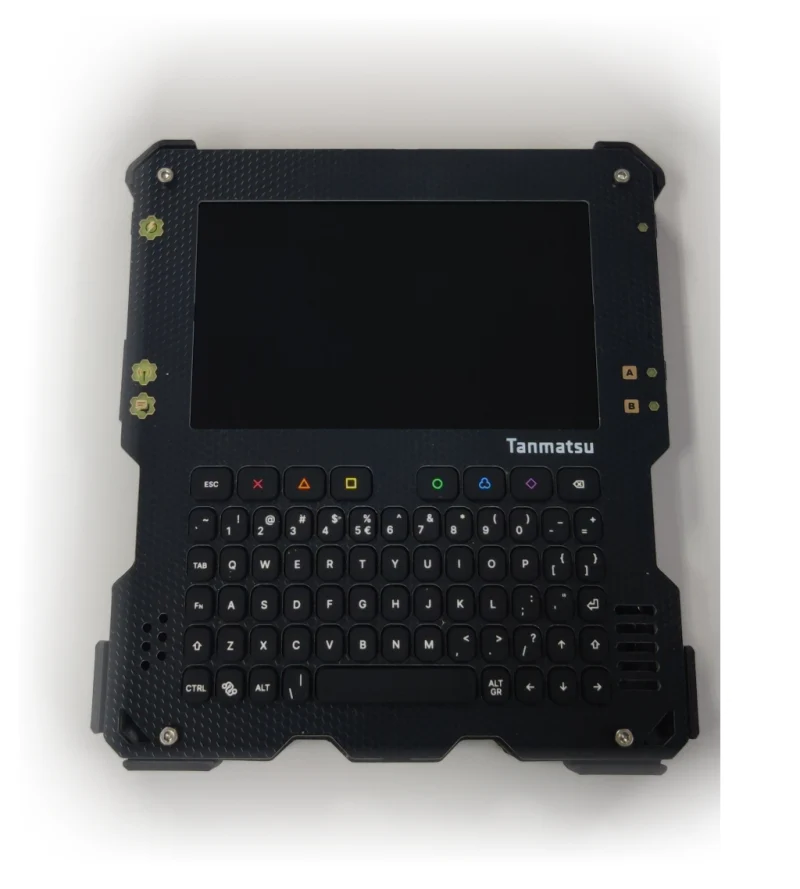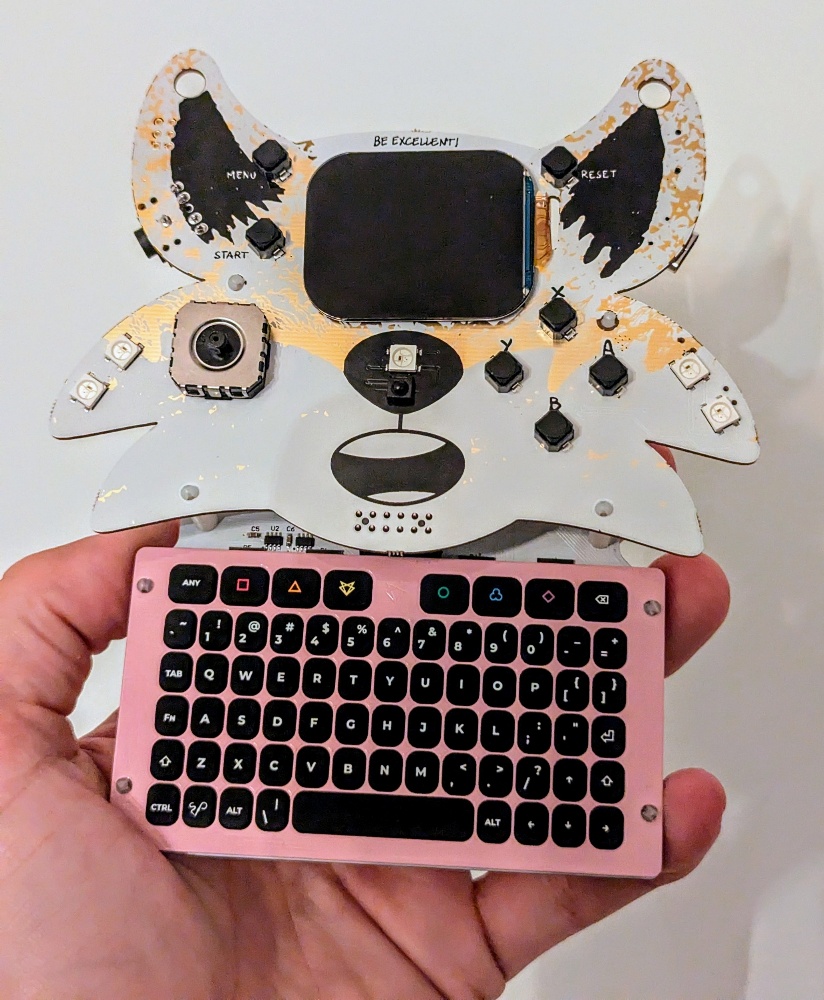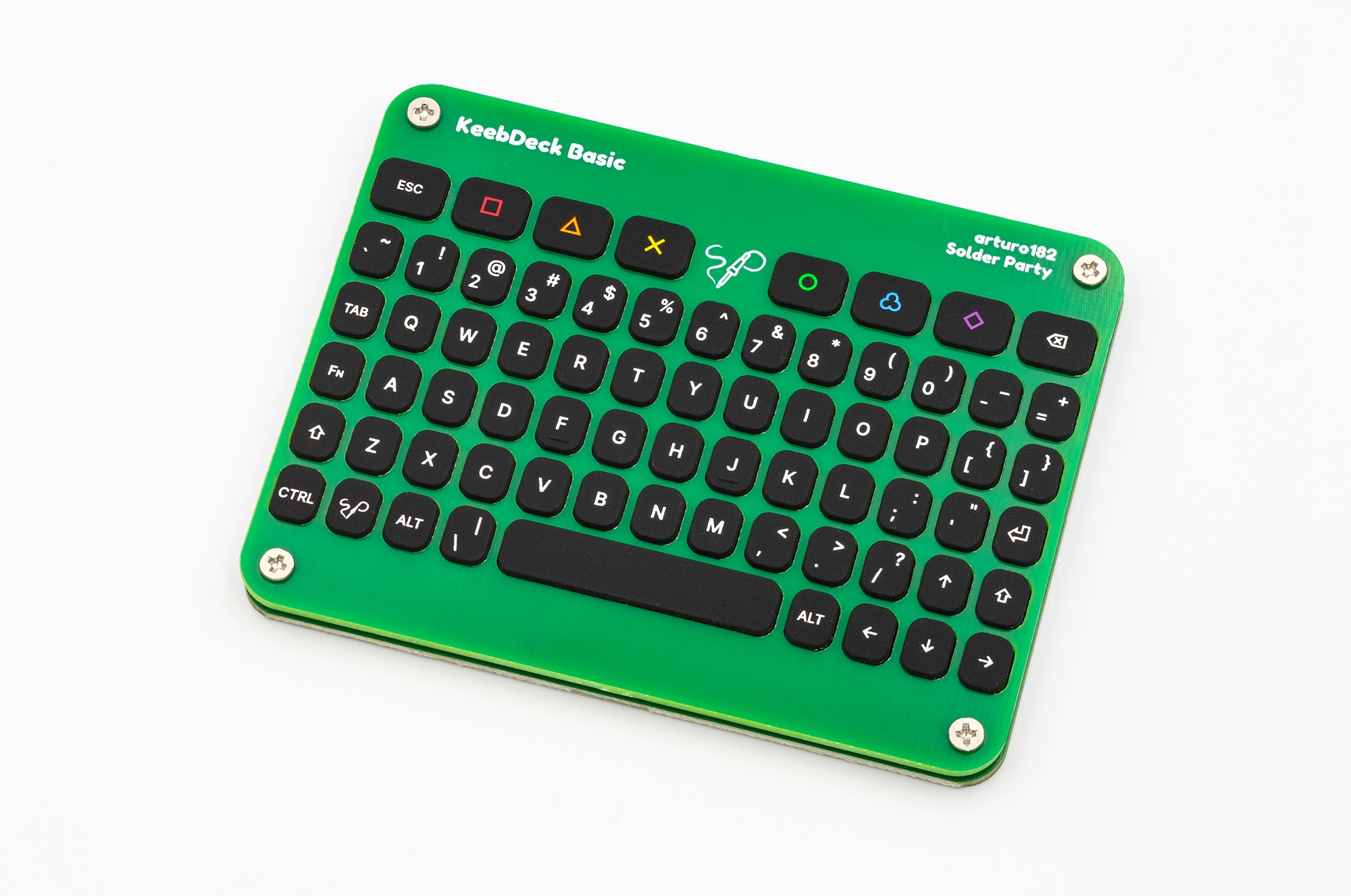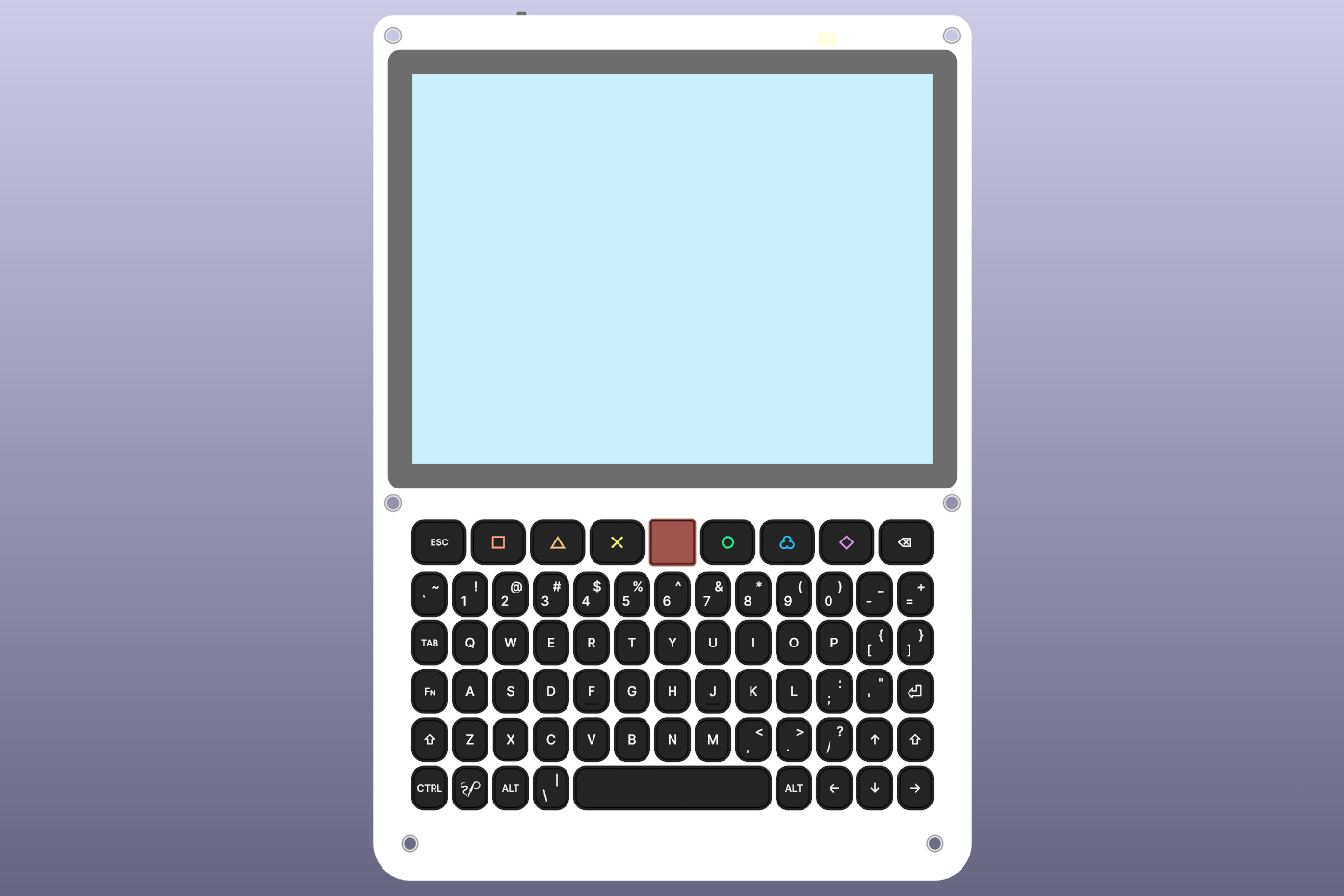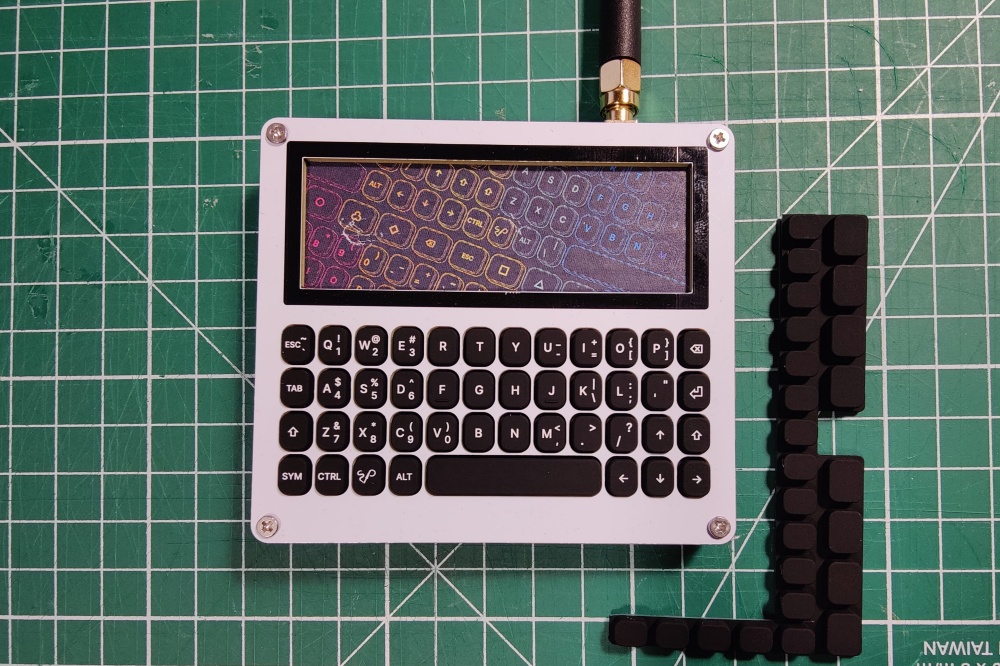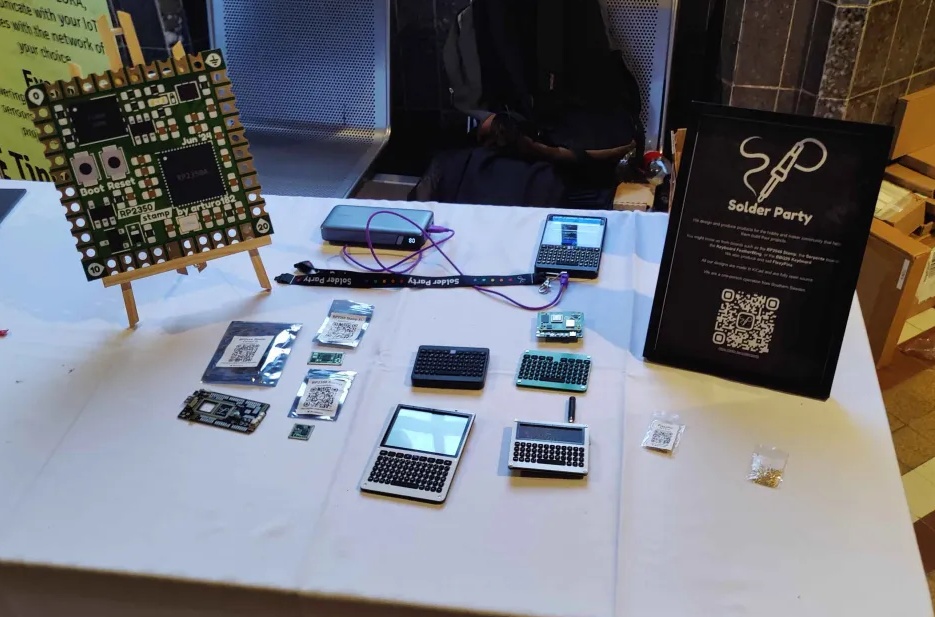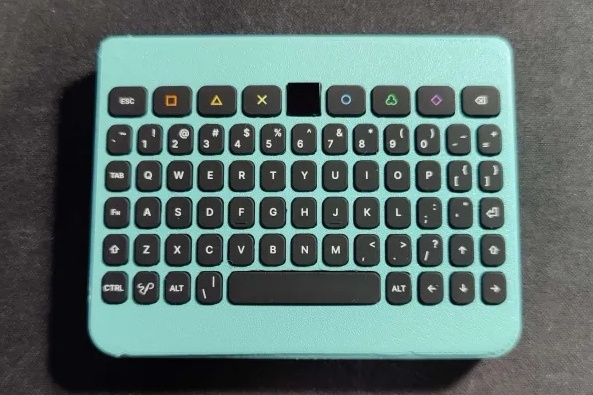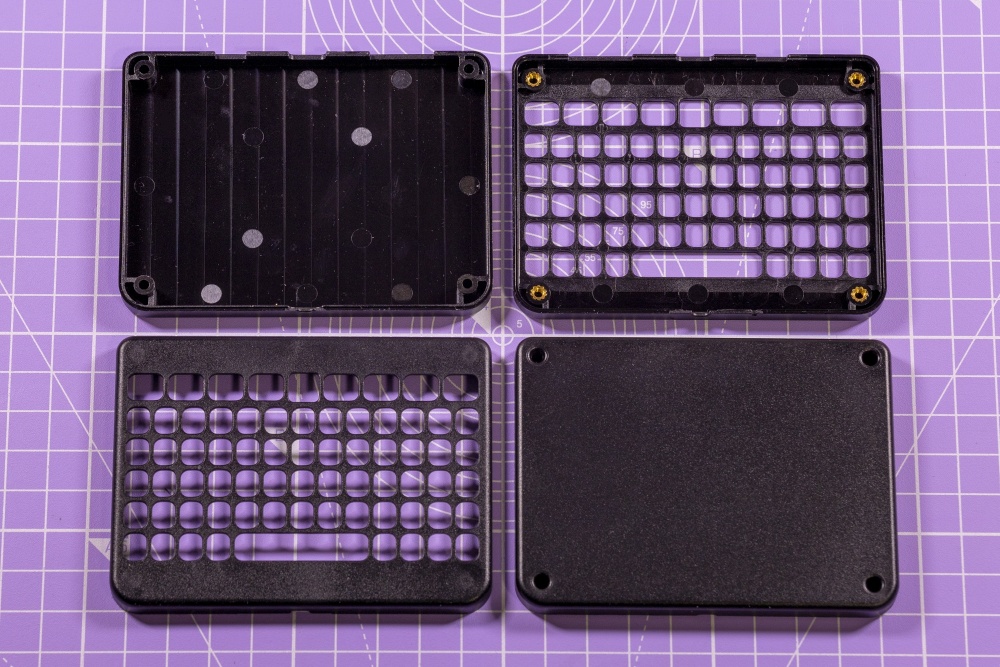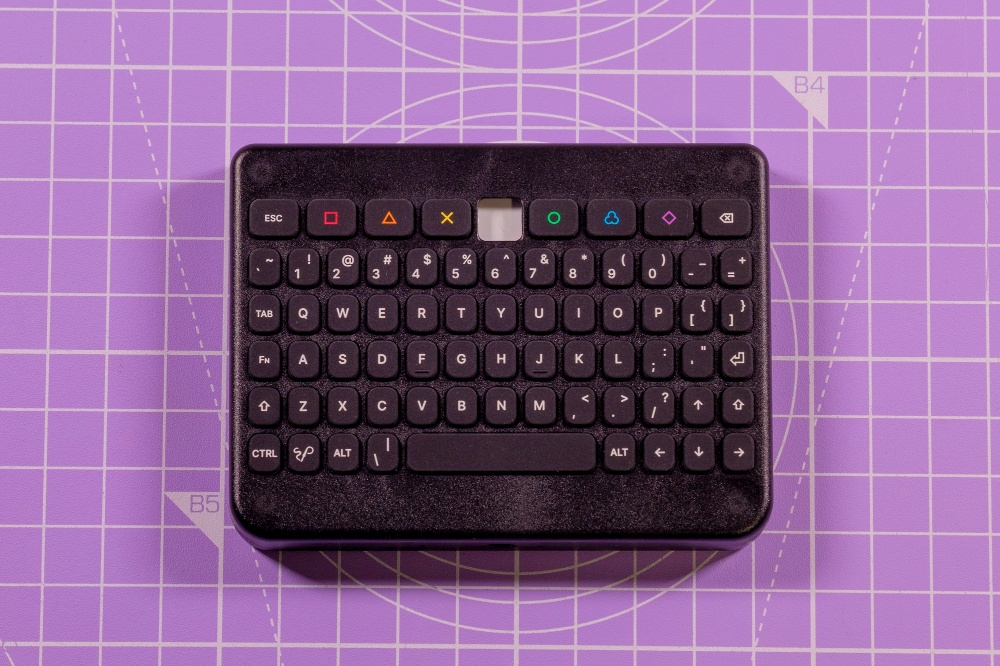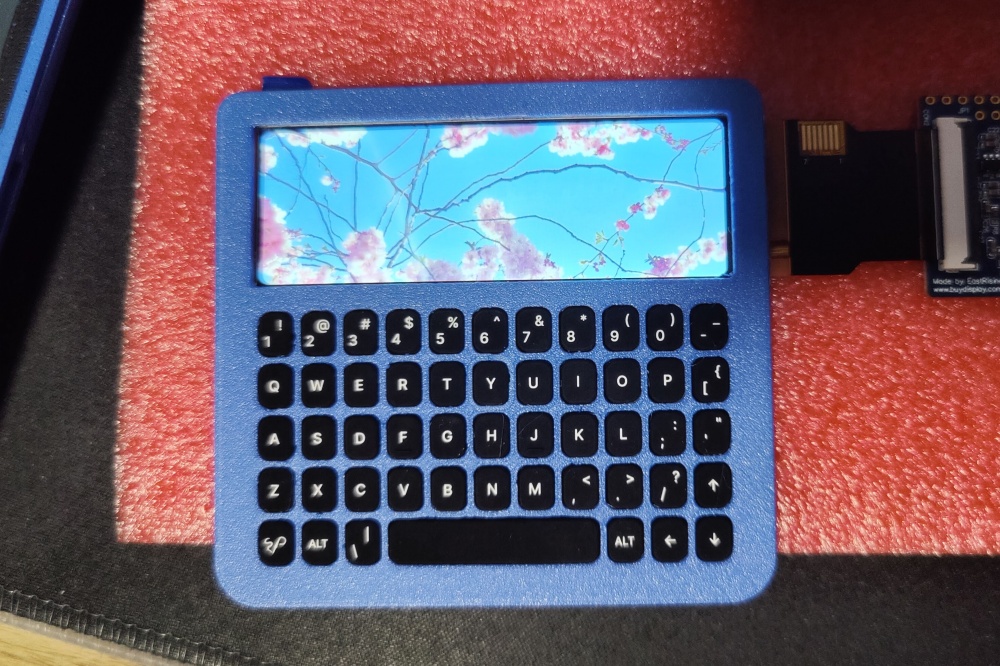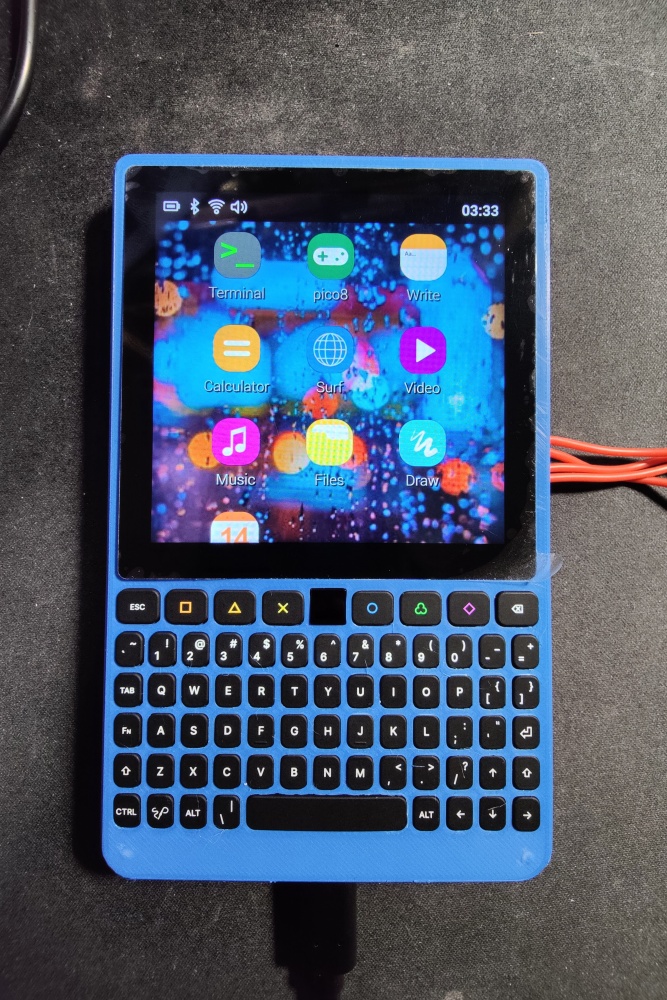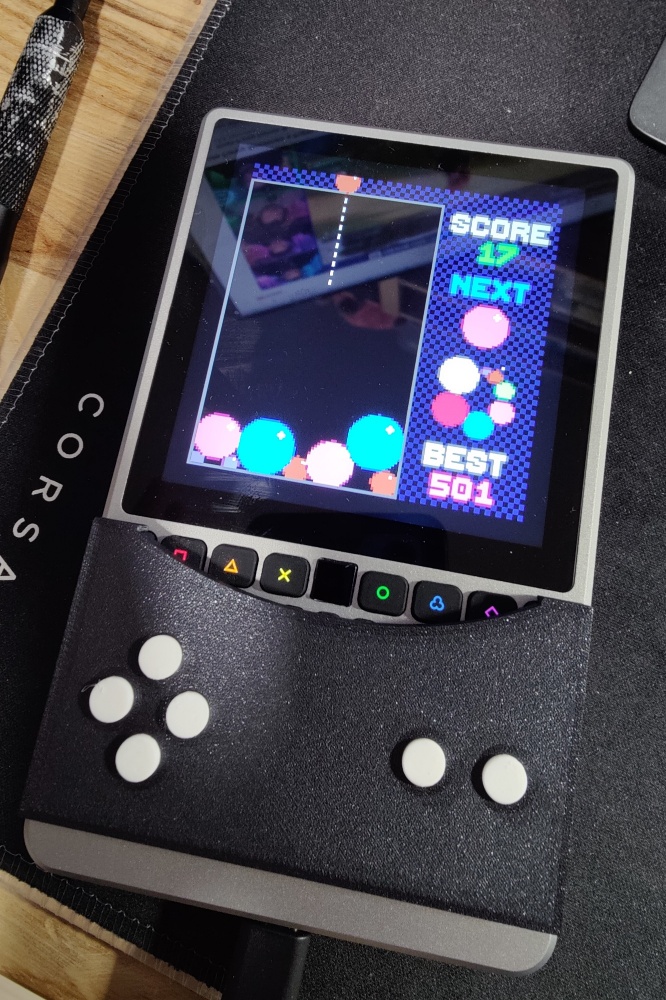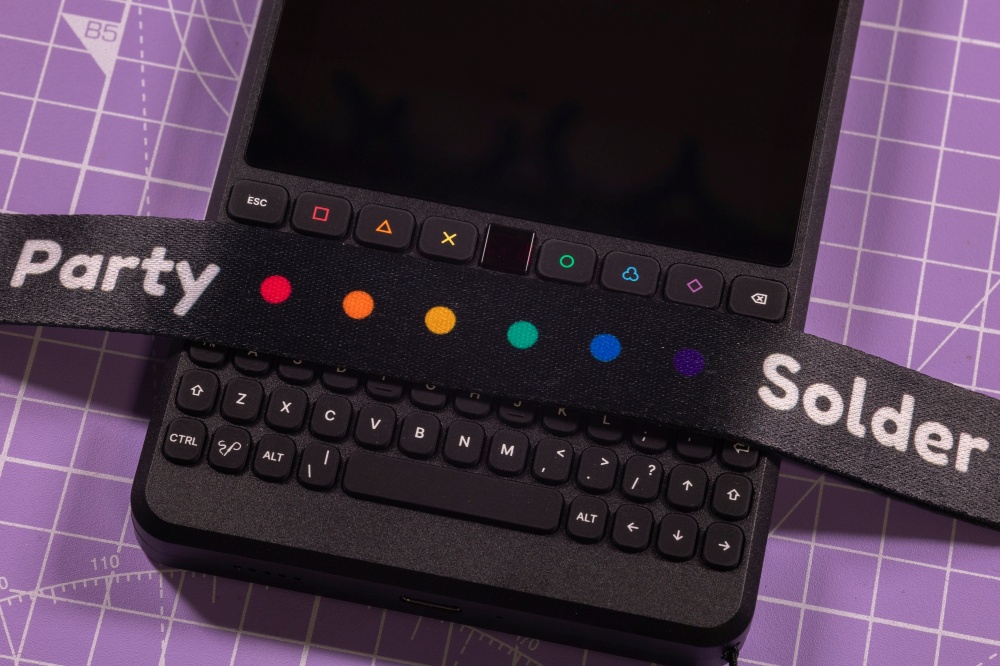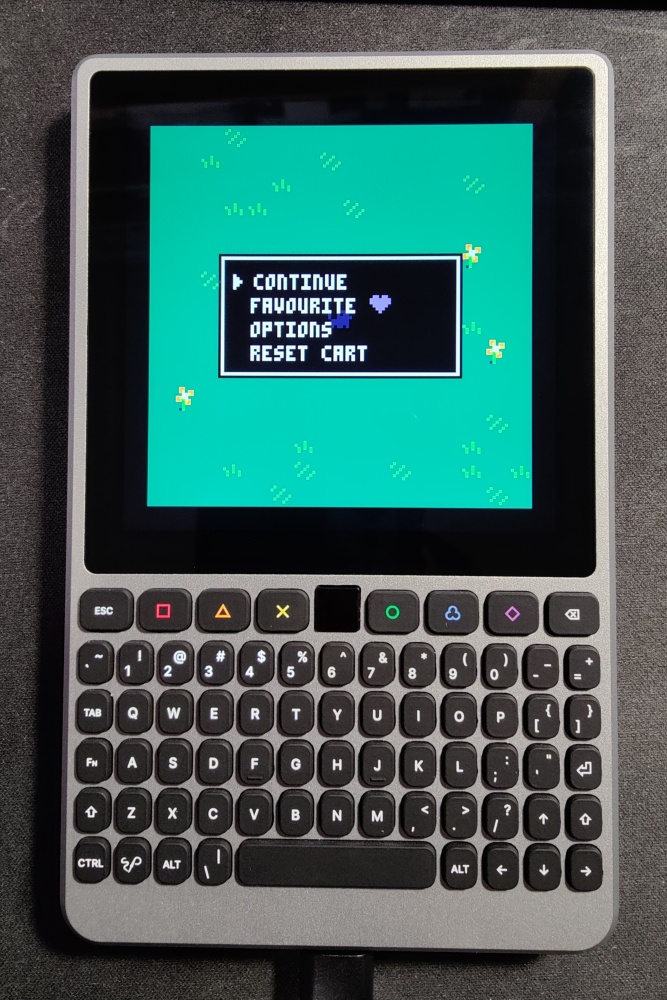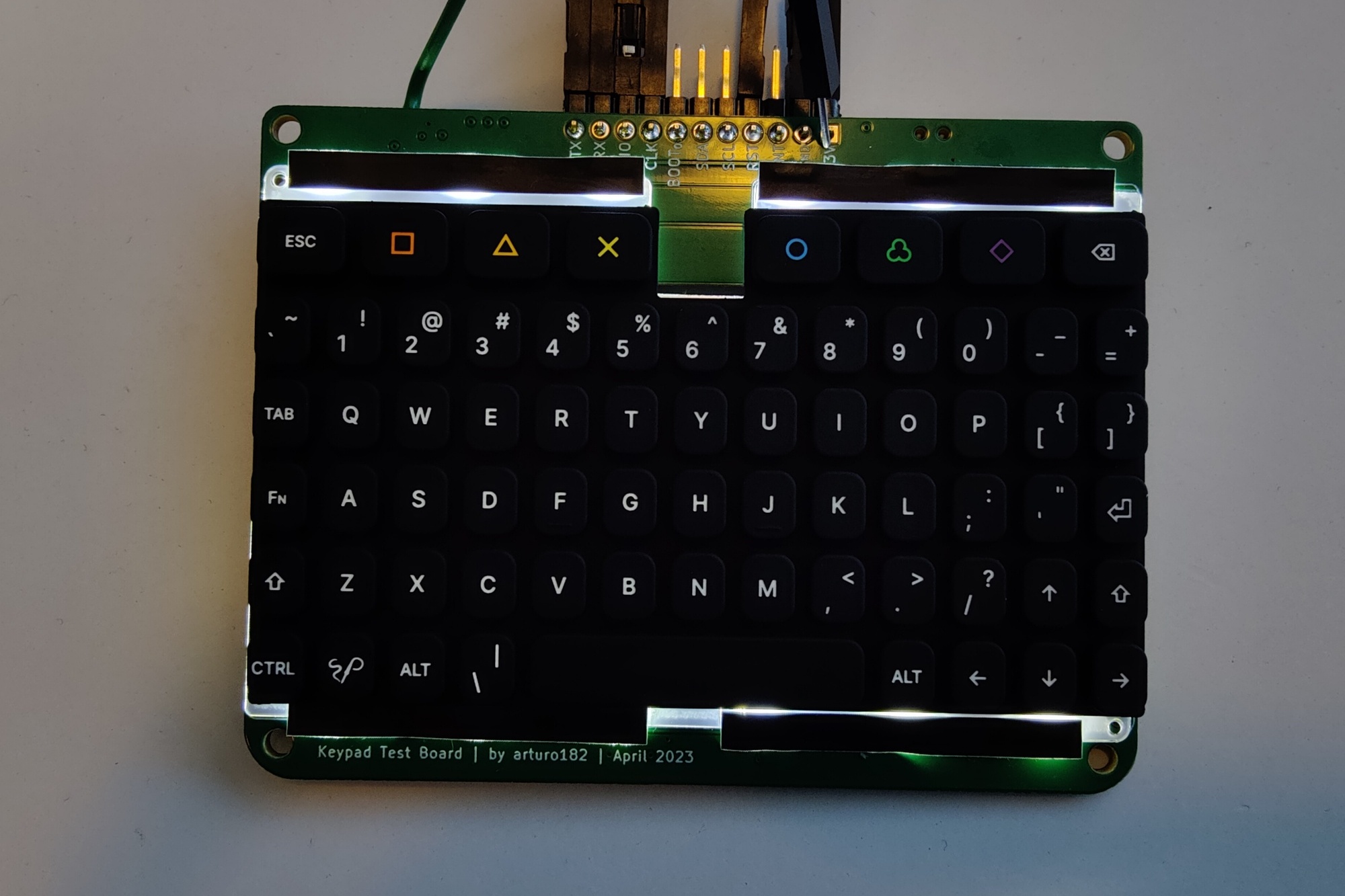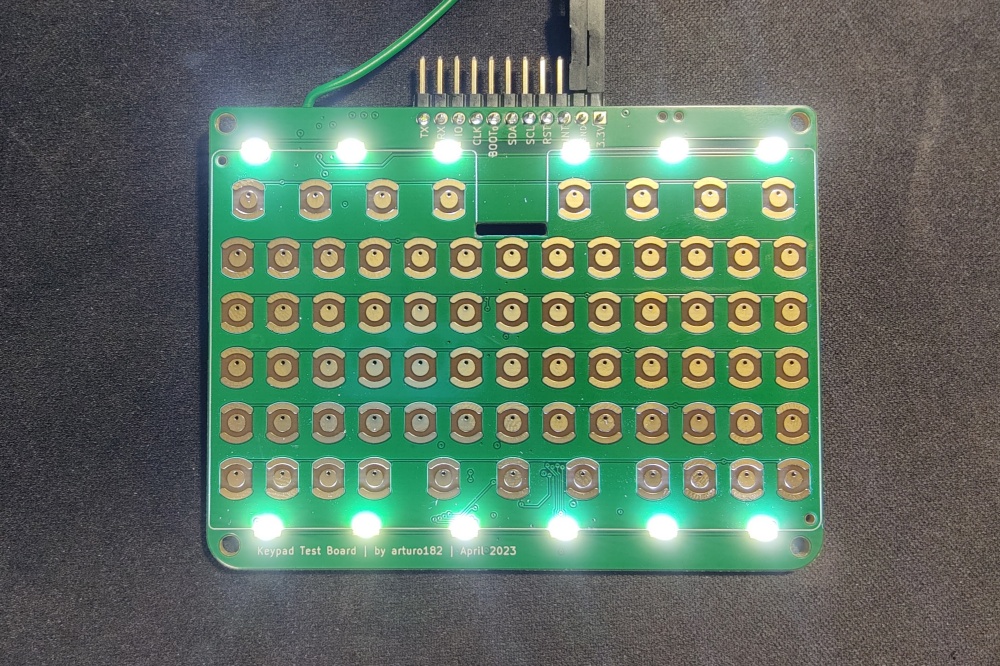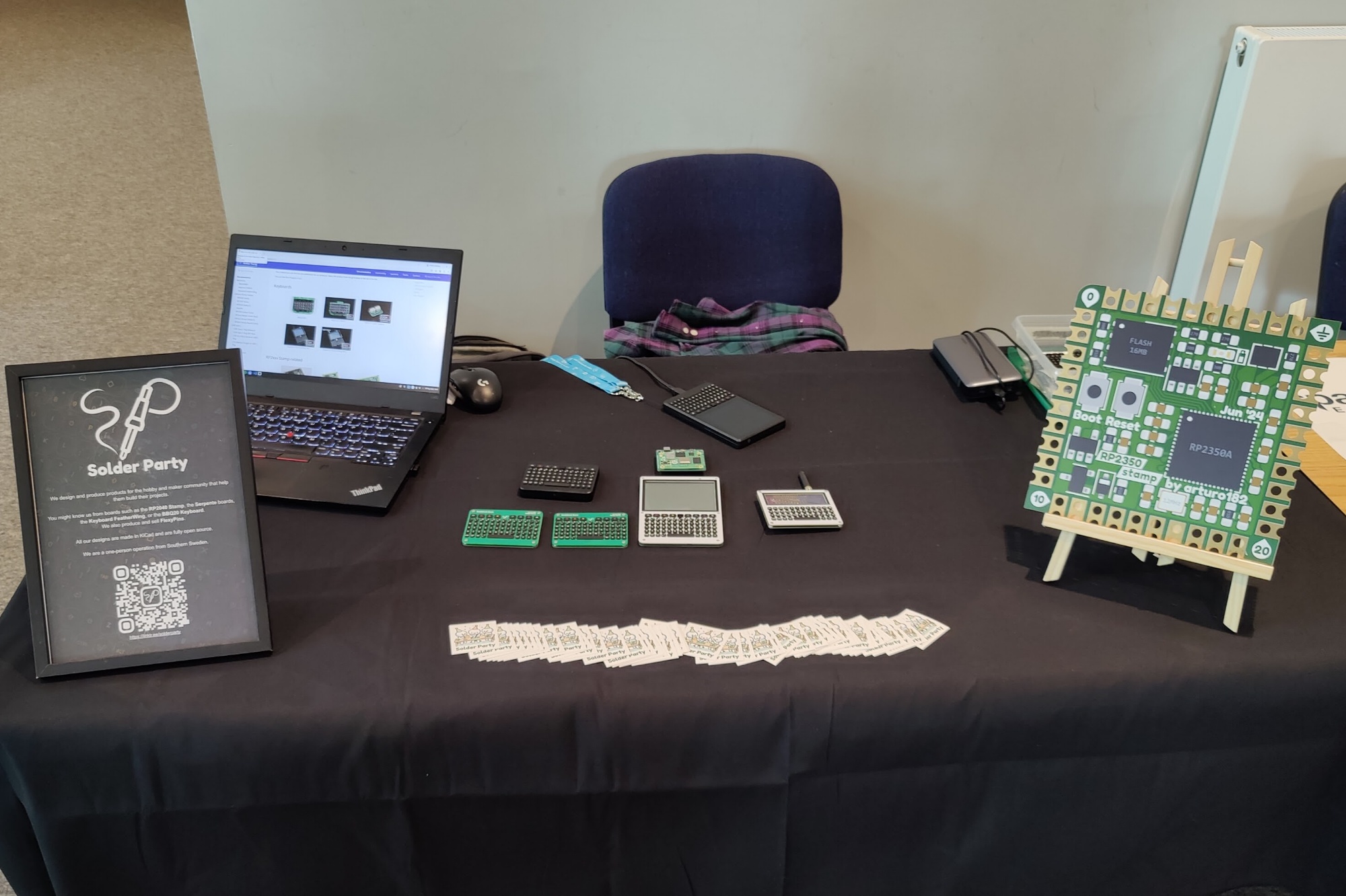You may be familiar with our previous BB-based keyboard products, maybe you even own one. As it became harder and harder to source the parts for them, we decided to do something about it and went on to create a fully-custom silicone keypad, designed with makers and hackers in mind. Meet the KeebDeck Keyboard!
The KeebDeck Keyboard is a compact (85x48mm) 69-key alphanumeric silicone keypad with an orthogonal layout based on standard PC keyboards. It has all the keys a hacker would expect and a few extra ones that can be used as macros. The keypad sits on a snap dome sheet, giving it a tactile feel that's comfortable even for extended thumb-typing sessions. The keypad can also optionally be backlit, perfect for dimly lit rooms.
The keyboard utilizes a sandwich-style design, requiring a specific footprint to be placed on a PCB so that the adhesive dome sheet can be applied on top of the footprint.The silicone keypad then goes on top of the dome sheet and requires a top case (another PCB, a 3D-printed/milled/etc. cover) that will keep the keypad in place. The required spacing between the two surfaces is 2.0mm.
Regardless if it's in one of our products, a conference badge, a cyberdeck, or your custom PCB, the KeebDeck keyboard is pleasant to type on and easy to work with. In the near future, in addition to releasing products using the Keyboard, we will also open source drawings, 3D models, footprints, and symbols for popular PCB design programs.
Already in use
You might already have seen the KeebDeck keyboard (albeit lightly modified) in these projects:
If you're interested in getting the keyboards in bulk and/or customizing them, don't hesitate to contact us!
More to come
KeebDeck Basic
The Basic is as simple as it gets, making it a great way to get a feel of the keyboard without spending a lot. The Basic is made out of two PCBs sandwiched together. It exposes the keyboard as a USB HID and has a footprint for an optional Qwiic connector, where it can be communicated with using the protocol found in our previous BB-based keyboards over I2C.
KeebDeck Mini
The Mini is the successor to our BBQ20KBD, in addition to the keyboard it also has an optical thumb sensor, which acts as a USB HID Mouse. The Mini is powered by the nRF52833 BLE-capable chip. It comes with a injection molded case which can fit a LiPo inside, making it a great compact wireless keyboard. In addition to the USB and Qwiic connectors, it also has a PMOD-compatible I2C pin header, giving you lots of ways to interact with it. The Mini also includes a backlight for the keys and a power switch.
KeebDeck FeatherWing (Mono)
One of the successors to our Keyboard FeatherWing, it expands the functionality by adding another Feather socket, allowing for simultanous use of a MCU/SoC Feather as well as an additional FeatherWing. The FeatherWing also has two Qwiic connectors, one on the edge of the board, facing outward, and one inside, allowing for additional boards to be connected can kept inside a potential case. The FeatherWing also has an extra LiPo connector, so that the connector on the Feather board itself doesn't have to be used. The board uses a low-power STM32 MCU as a co-processor, acting as controller for the optical thumb sensor, the keyboard (over I2C), the display backlight, and a GPIO Expander. The keyboard is also exposed over USB via two non-standard pins on the left Feather socket.
An adapter for the RPi CM4/CM5 modules is also in the works.
KeebDeck Pico
Early in the development, the Pico is meant as a LoRa development board, featuring a smaller version of the KeebDeck keyboard, as well as a Meshtastic-compatible LoRa module and a RPi Pico-compatible footprint. In the prototype photos the screen is replaced by cardboard. More information will be available in the future.
KeebDeck SP
The SP is the most ambitious of the projects, powered by the RPi CM4/CM5 module, it is capable of running Linux. It features a 720x720 capacitive touch display, includes a battery, has a USB connector working as Device and Host, a GPIO header on the side. It comes in a custom-designed anodized aluminum case, making it feel sturdy in your hands.


